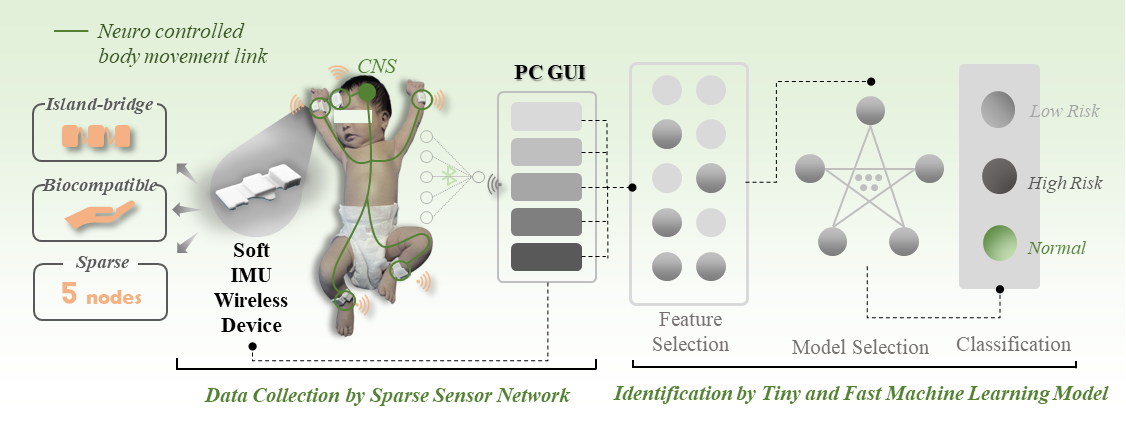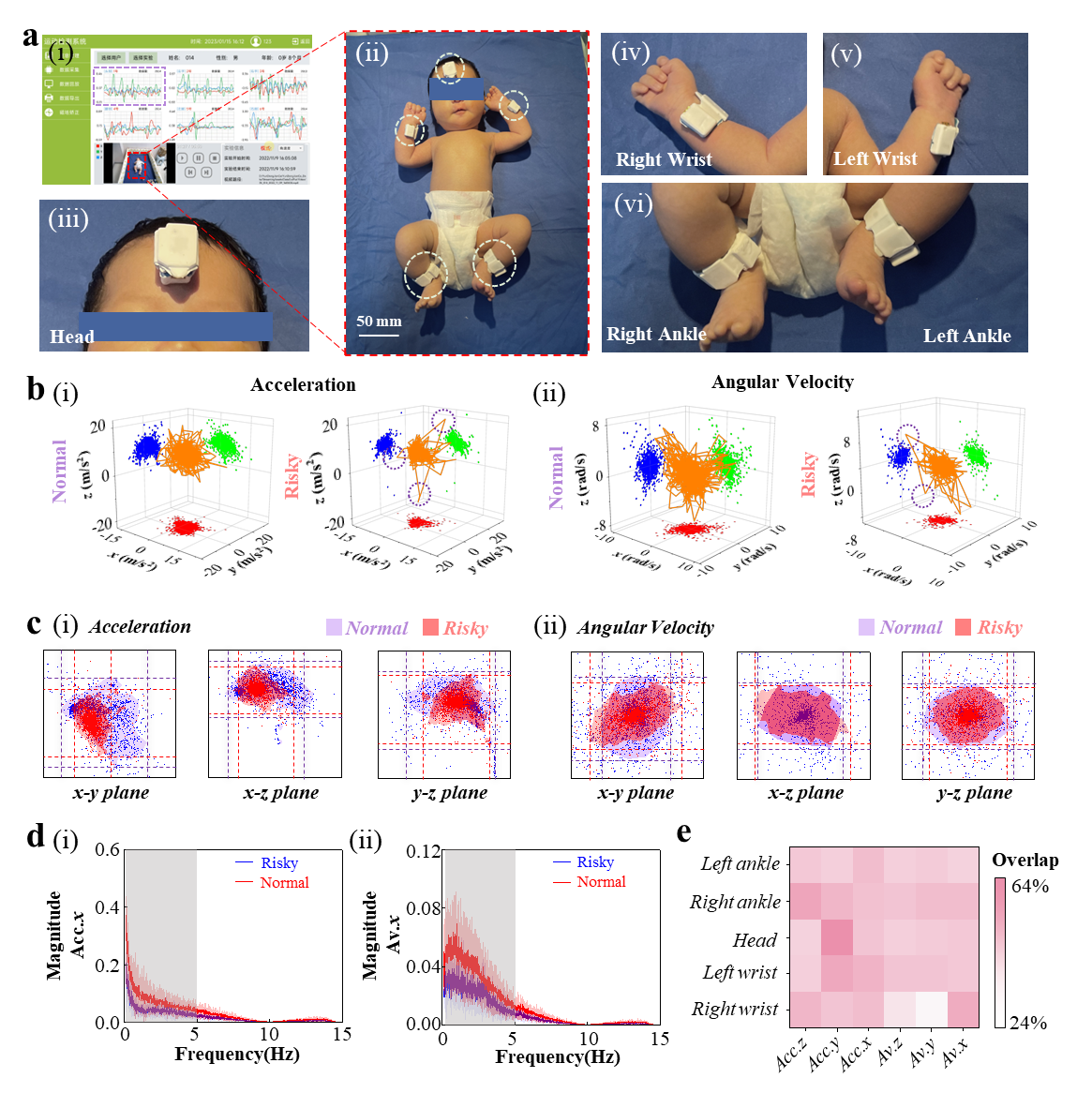
General movements (GMs) have been widely used for the early clinical evaluation of infant brain development. An international team has recently proposed a sparse sensor network with soft wireless inertial motion unit (IMU) devices for automatic early evaluation of GMs in infants, which will facilitate immediate assessment of potential development disorders and timely rehabilitation.
Infants' general movements can be captured and digitized using a video camera, but the lack of quantitative assessment and well-trained clinical pediatricians presents an obstacle for wider use, especially in low-resource settings.
The team, led by YANG Hongbo from the Suzhou Institute of Biomedical Engineering and Technology (SIBET) of the Chinese Academy of Sciences and CHENG Huanyu of Pennsylvania State University, has jointly developed the intelligent sparse sensor network with only five sensor nodes.
The nodes, which have robust mechanical properties and excellent biocompatibility, enable continuous and stable acquisition of whole-body motion data.
"In order to significantly reduce the risk of iatrogenic skin injuries due to the fragility associated with the immature skin of infants, it is highly desirable to explore soft wearable wireless devices with 'skin-like' mechanical properties to interface with the neonatal skin," said YANG Hongbo.
The researchers showed that the soft wireless devices have excellent mechanical, biocompatible and electrical performance against neonatal skin. Moreover, the soft sparse sensor nodes wirelessly connected by the Bluetooth low energy one-to-five technology could be flexibly attached to the delicate neonatal skin to monitor the general movement of the infants.
The integrated device, combined with the customized graphical user interface and a tiny machine learning model, provides continuous and robust monitoring and processing of the general movements to achieve a prediction accuracy of up to 99.9% in clinical settings.
Furthermore, the model with half the feature dimension still achieves almost unchanged accuracy, demonstrating the high potential for future use in low-resource settings.
The design strategies from this work may hold promise for AI-based intelligent medical services in the future, for other disease applications, such as lung function and stroke balance assessment, as well as rehabilitation support in remote areas, according to YANG.
The results, titled "Intelligence Sparse Sensor Network for Automatic Early Evaluation of General Movements in Infants," were published in Advanced Science.

Inside cover picture of the journal about this paper, which is inspired by a traditional Chinese mythology, where the fairy of Seven Star Lady is guarding the health and safety of the infant. In this article, the intelligence sparse sensor network with five sensing nodes on the infant continuously capture and analyze general movements for the early clinical evaluation of infant brain development. (Image by Advanced Science)

The schematic illustrating the system design and application of the intelligent sparse sensor network with soft wireless IMU devices. (Image by SIBET)

Photograph showing the experimental setup with the integrated device placed on the right wrist, left wrist, right ankle, left ankle, and the head of an infant (12 wk.) lying in a crib. (Image by SIBET)

86-10-68597521 (day)
86-10-68597289 (night)

86-10-68511095 (day)
86-10-68512458 (night)

cas_en@cas.cn

52 Sanlihe Rd., Xicheng District,
Beijing, China (100864)

